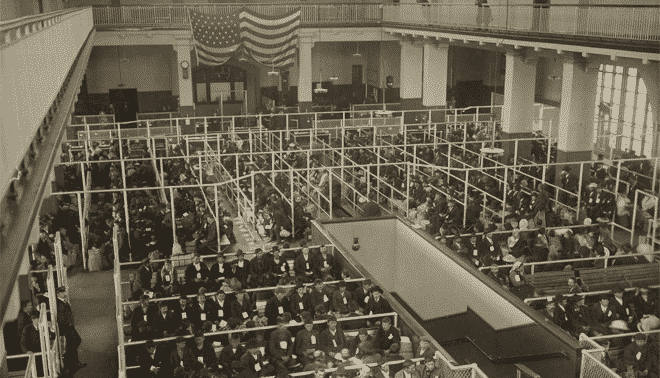
As director of the American Family Immigration History Center at Ellis Island, Jackie Schalk often works with visitors who are sure their ancestors arrived at Ellis Island in the mid-1800s.
The Ellis Island website offers full coverage of New York’s era as a major port of immigration from 1820 to 1957. “These records are going to open up opportunity for so many people who visit. I can’t wait,” Schalk says.
The joint project also has placed an index to the records on the free FamilySearch website. The index links to record images on the Ellis Island site. On either website, you’ll need a free registration to view matches to your search results.

Schalk cautions that New York passenger lists from the 1800s aren’t the easiest to search. That’s in part because they’re not actually ships’ passenger lists, but customs lists. A fire on Ellis Island in 1897 burned all the New York passenger lists stored on the island.
Customs Lists
Schalk explains that the 1800s New York passenger records on the Ellis Island website, and on Ancestry, FamilySearch and elsewhere, are actually customs lists. The ship’s purser recorded customs list alongside the passenger lists, and delivered them to US customs agents on arrival.
“These records were kept for tax purposes,” Schalk says of customs lists. They’re full of abbreviated first names (Patk for Patrick), generalized places of origin (such as Hannover, a historical region, instead of Schapen, a village), and missing occupations. All can make it difficult to recognize your ancestor’s listing.
Not to mention the spelling variants, handwriting and indexing errors that are part of any collection of old records.
Here’s an example of a New York customs list from 1853:

Customs lists don’t have column headings on every page. You have to go back to the first page to see the ship name, arrival date and column headings:

Tips to Identify Your Immigrant Ancestor on Ships’ Lists
- Family stories passed down might not be true. Your ancestor may have arrived in a different year and/or port from what you thought. Explore about migration patterns for people of your ancestor’s nationality or ethnicity, especially those who settled near your family in the United States.
- Research the immigrant thoroughly in US records to learn as much identifying information as you can. This also helps you learn when and where she arrived.
- Look especially for records such as naturalizations, passports and obituaries. But do keep in mind that your ancestor’s memory may have been off when these later records were created.
- Trouble finding your ancestor on a passenger list? Search for people he might have traveled with, such as parents, husband or wife, children, in-laws and neighbors.
- Broaden your searches and use wildcards to allow for variation in arrival year, name spellings, and travelers’ reported age. You even can leave out the name and search on other parameters.
- Many immigrants traveled back home (sometimes, more than once) to visit, retrieve family, or because they never intended to stay in the US. Check later, more-detailed passenger lists, in case your ancestor followed this pattern.
No comments:
Post a Comment